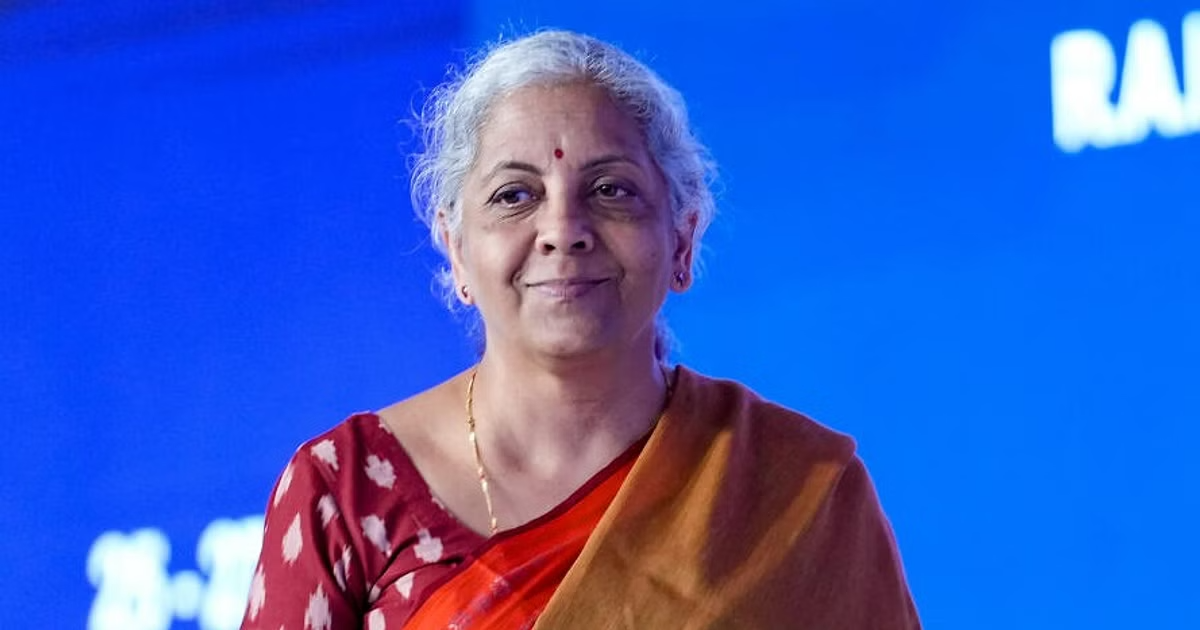In the lead-up to the Interim Budget, the Finance Ministry has released a comprehensive report outlining a promising economic future for India. The report, titled ‘Indian Economy – A Review,’ projects a robust GDP growth close to 7% in the fiscal year 2024-25, despite potential geopolitical risks such as the Red Sea crisis. Moreover, the Finance Ministry envisions India achieving the significant milestone of becoming a $7-trillion economy by 2030.
Finance Ministry’s report GDP growth rate
The Finance Ministry’s report highlights the resilience of the Indian economy, anticipating a growth rate that outpaces the global economy in the upcoming fiscal year. Despite the absence of the traditional Economic Survey before the Union Budget, the interim report emphasizes India’s potential to achieve a year of 7% real growth in FY25.
Chief Economic Advisor V Anantha Nageswaran notes in the preface, “If the prognosis for FY25 turns out to be right, that will mark the fourth-year post-pandemic that the Indian economy will have grown at or over 7%.”

Contrary to some projections, the National Statistical Office (NSO) has estimated a growth rate of 7.3% in the first advance estimate for FY24. Various domestic and global research agencies, while projecting a growth rate in the range of 6.3 to 6.5%, show an upward bias.
Enormous Capital Expenditure
The Department of Economic Affairs (DEA) report attributes the optimistic growth rate to recent and future structural reforms and the strength of the financial sector. However, it cautions about the elevated risk of geopolitical conflicts, which remains an area of concern.
The report emphasizes that the government’s strategic focus on capital expenditure (capex) has yielded positive results for the economy. Public sector capital investment has surged over the last decade, increasing from ₹5.6-lakh crore in FY15 to ₹18.6-lakh crore in FY24. This capex-led growth strategy has played a crucial role in driving the Indian economy forward.
Furthermore, the report lauds the government’s efforts in strengthening the balance sheets of banks through initiatives like recapitalization and the merger of public sector banks. Reforms such as the amendment of the SARFAESI Act 2002 and the enactment of the Insolvency and Bankruptcy Code 2016 (IBC) have contributed to cleaning up the balance sheets of both banks and corporates.
Government and RBI collaboration
The “twin balance sheet problem” of corporates and banks has transformed into a “twin balance sheet advantage” due to the coordinated efforts of the government and the Reserve Bank of India (RBI). The report underscores the success of these reforms in ensuring the health of the financial sector.
The Finance Ministry’s report also highlights the rising capital expenditure in the public sector, a strategy that has paid rich dividends for the economy. The capital expenditure of the public sector, including Union government capex, grants to the States for capital asset creation, and investment resources of Central Public Sector Enterprises (PSEs), has witnessed a significant increase from ₹5.6-lakh crore in FY15 to ₹18.6-lakh crore in FY24.

The Indian financial markets, especially the equity markets, have demonstrated robust performance over the last decade. India now holds the second-largest weightage in the MSCI Emerging Markets Index, a testament to the strength and attractiveness of Indian equities. The report also notes heightened investor interest in India’s bond markets, following the inclusion of India’s sovereign bonds in JP Morgan’s Emerging Markets Bond Index.
The Finance Ministry’s review, titled ‘The Indian Economy – A Review,’ provides several key highlights:
- Public Sector Capital Investment: The last ten years have witnessed a surge in public sector capital investment, contributing to the economic growth of the nation.
- Financial Sector Health: The financial sector is reported to be healthy, with strong non-food credit growth, supporting the overall economic momentum.
- Growth in the Face of Global Challenges: Despite potential global challenges such as geopolitical conflicts, the report maintains an optimistic outlook for India’s economic growth.
- Transformational Reforms: Structural reforms implemented since 2014, including banking sector reforms and the introduction of the Insolvency and Bankruptcy Code, have strengthened the macroeconomic fundamentals of the economy.
- Capital Expenditure-Led Growth: The government’s emphasis on a capex-led growth strategy has yielded positive results, with significant increases in public sector capital expenditure.
- Global Market Recognition: Indian equity markets have performed exceptionally well, securing the second-largest weightage in the MSCI Emerging Markets Index.
- Burgeoning Investor Interest: India’s bond markets have attracted robust investor interest, leading to increased participation and potential inflows that could aid in reducing government borrowing.
In addition to the economic aspects, the report recognizes the government’s commitment to ensuring steady economic growth. It applauds the generation of resources for investment needed for climate change adaptation, building resilience, and mitigating emissions. The last decade has seen India undergo a transformative journey from fragility to stability and strength, marked by inclusive development, a lower unemployment rate, and moderate inflation.
The report also acknowledges the government’s successful management of the COVID-19 pandemic, mature stimulus measures, and the monumental success of the vaccination drive, all contributing to the economy’s return to a high-growth path.
Furthermore, the concept of welfare in India has evolved significantly over the last decade, focusing on a more long-term-oriented, efficient, and empowering approach. Notable achievements include the substantial rise in the female Labour Force Participation Rate (LFPR) from 23.3% in 2017-18 to 37% in 2022-23. The female gross enrolment ratio in senior secondary education has more than doubled from 24.5% in FY05 to 58.2% in FY22, and in higher education, it has quadrupled from 6.7% in FY01 to 27.9% in FY21.

2 thoughts on “India’s Economic Outlook: Finance Ministry Forecasts 7% GDP Growth in FY25 and Eyes a $7-Trillion Economy by 2030”